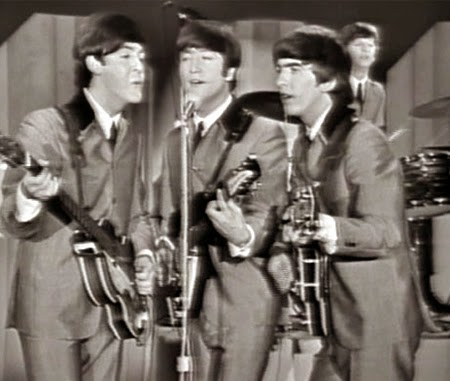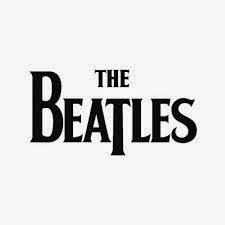The Story:
"This Boy" was a minor Beatles hit and was actually the B-side of their breakthrough "I Want to Hold Your Hand". As a result, although never an A-side song, "This Song" received plenty of airplay - enough airplay to hit the American charts as a B-side - the first indication of the Beatlemania craving that was soon to dominate the hearts and minds of worldwide youth.
 |
| The Beatles playing "This Boy" on Ed Sullivan |
This song represented the progression of the Lennon/McCartney songwriting team - a beautiful Melody, co-written by John (the melody) and Paul (the 3 part harmonies)/
Songwriting:
This song was written in a hotel room on the road, in much the same way as they had written their early classic, "She Loves You" -- both John and Paul sitting on their hotel beds facing each other in a typically British olive and green hotel room -- "the colors of vomit".
According to John and Paul, the influences for this song included Smokey Robinson and the Miracles "I've Been Good to You" and The Teddy Bears "To Know Her is to Love Her".
What was so significant about this song was that it was one of only (3) songs the Beatles actually wrote for tight 3-part Harmonies - from the start. The Beatles of course were renowned for their harmonies, they were quite good at them - but along the way, most of the harmonies were added after the song writing process, during the creative studio process. But this one was created for the tight harmonies of John, Paul and George from the get-go.
In fact, "This Song" was one of only (3) songs written for 3-Part Harmony, including "Yes it Is" and the ethereal "Because" 7 years later on the legendary "Abbey Road" Album.
According to John and Paul, the influences for this song included Smokey Robinson and the Miracles "I've Been Good to You" and The Teddy Bears "To Know Her is to Love Her".
What was so significant about this song was that it was one of only (3) songs the Beatles actually wrote for tight 3-part Harmonies - from the start. The Beatles of course were renowned for their harmonies, they were quite good at them - but along the way, most of the harmonies were added after the song writing process, during the creative studio process. But this one was created for the tight harmonies of John, Paul and George from the get-go.
In fact, "This Song" was one of only (3) songs written for 3-Part Harmony, including "Yes it Is" and the ethereal "Because" 7 years later on the legendary "Abbey Road" Album.
Studio Date:
October 17, 1963
Location:
Abbey Road Studios, London, Studio Two
Songwriting Credit:
John Lennon/Paul McCartney
Personnel:
John Lennon/Paul McCartney
Personnel:
John Lennon -- Vocals, Rhythm Guitar
George Harrison -- Vocals, Lead Guitar
Paul McCartney -- Vocals, Bass Guitar
Ringo Starr -- Drums, Hand Claps
Technical:
Producer: -- George Martin
Engineer: -- Norman Smith
Asst. Engineer: -- Geoff Emerick
Instruments:
The Beatles relied on using their stage gear for this recording:
John Lennon -- 1958 Rickenbacker 325 Capri
George Harrison -- 1957 Gretsch 6128 Duo Jet
Paul McCartney -- Höfner model 500/1 "violin" bass
The Beatles relied on using their stage gear for this recording:
John Lennon -- 1958 Rickenbacker 325 Capri
George Harrison -- 1957 Gretsch 6128 Duo Jet
Paul McCartney -- Höfner model 500/1 "violin" bass
Recording Legacy/Recording Innovation:
This song was one of the very early indication of their rapid musical maturity in the studio. They worked on this song immediately after completion of "I Want to Hold Your Hand". It took 15 takes and only two overdubs to reach satisfaction. Listening to this song (click below, nice old lip-synch video) - it is quite clear that the overdubs were likely to increase the power of John's middle eight verse.
According to the legendary engineer (assistant then) Geoff Emerick, the team was extremely impressed and surprised by the fact that the Beatles sang each take in perfect three-part harmony, almost every time, from first take to last.
George Martin was again unhappy with George Harrison's rather uninspired guitar solo during the bridge, which opened up John to belt out a powerful vocal there instead. According to Paul "Nice middle, John really sang that great".
Listen:

